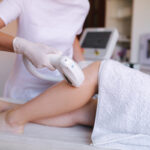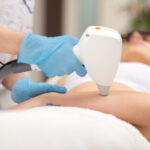How Smart Liposuction Works: Science Behind the Technology
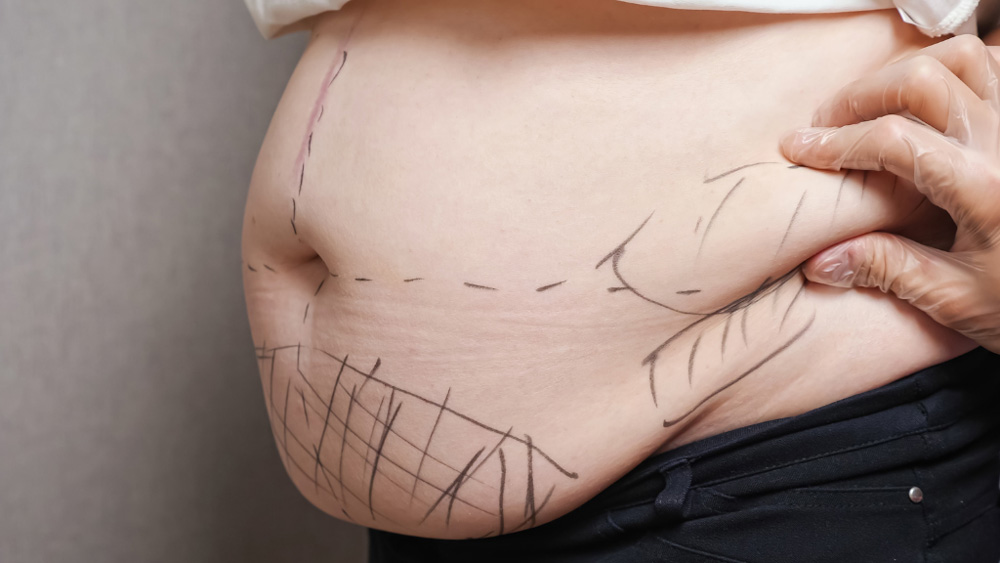
Smart Liposuction at Perizia Aesthetics combines laser physics, careful anesthesia, and precision instruments to remove fat while helping skin tighten. The goal is simple: create smooth, natural contours with minimal trauma. If you want a science-led plan that fits your anatomy, call +1 561-318-7895 or visit our Smart Lipo service page.
Smart Liposuction
Smart Liposuction—often called laser-assisted lipolysis—uses a hair-thin fiber that delivers light energy under the skin. That light becomes heat. Heat loosens fat cells and signals your collagen to contract. Once the fat softens, our team uses very small tubes to evacuate it. The same heat, kept within a safe range, tells collagen to rebuild over weeks, which helps your skin drape smoothly over the new shape.
A few terms help you read the rest of this guide with ease:
- Adipocytes are fat cells. When heated into the right range, their membranes fail and the contents liquefy.
- Collagen is your skin’s scaffold. Warm it carefully and its fibers shorten; over time, the body lays down fresh collagen that firms the area.
- Subdermis means the tissue plane just below the skin where contouring happens.
The essence is controlled physics. Perizia Aesthetics delivers enough energy to unlock fat and cue collagen, not so much that tissue overheats. That balance is what separates refined sculpting from rough debulking.

Laser–Tissue Interaction: The “Heat Sweet Spot”
Lasers don’t magically “melt fat.” They convert light to heat inside tissue. Different temperature bands create predictable effects. Below ~45°C, you mostly feel warmth. Around the mid-50s°C, collagen starts to denature—think of it as a temporary shrink that acts like a tightening switch. In the 60–70°C range, fat cell membranes break apart, which makes aspiration smoother and reduces mechanical trauma. Above 70°C, the risk of overt coagulation and burns rises fast. That zone is avoided through strict controls.
In practice, the fiber glides through the treatment layer in long, even strokes. Energy is laid down like brushwork: thin, consistent, and layered. The physics here matters. Heat diffuses a few millimeters outward from the fiber tip. If the tip pauses, heat stacks up in one spot. If it keeps moving, heat spreads evenly and the tissue responds predictably. Perizia Aesthetics uses motion discipline and measured energy so each pass conditions the tissue without creating hot spots.
You’ll sometimes hear photothermal and coagulative effects mentioned. Photothermal means light-driven heat. Coagulative means heat thickens proteins and seals tiny vessels. Those micro-seals are a major reason patients often see less bruising with laser-assisted methods than with suction alone.
Dose Control (Dosimetry) Made Understandable
Every laser procedure is a math problem. The variables are power (how fast heat is produced), pulse characteristics (how long energy stays “on”), dwell time (how long the fiber lingers in any tissue point), and pass count (how many laps we make through the same zone). Change any one variable and total dose shifts.
Perizia Aesthetics sets guardrails before a pass begins. Power is capped for the tissue layer we’re in; superficial layers get lower energy because the skin sits close by. The fiber moves at a steady pace to avoid stacking heat. Pass counts are logged per area. Border zones—where the abdomen meets the flanks, for example—receive feathering passes: lighter energy and softer suction. This dose discipline produces smoother handoffs between regions and reduces the risk of visible “steps” under the skin.
Think of it like toasting bread. The right heat for the right time gives an even golden surface. Too hot or too long burns the edges first. Laser lipolysis rewards the same restraint.
Tumescent Anesthesia: Why the Numbing Fluid Is a Game Changer
Before any laser energy is delivered, we infuse the treatment layer with tumescent solution—a very dilute mixture of numbing medicine in saline. This is not general anesthesia; you remain comfortably awake.
The solution does three important things. First, lidocaine provides analgesia, which means the area goes numb. Second, epinephrine constricts tiny blood vessels. That reduces bleeding and bruising, and it also keeps the lidocaine local for longer, so you stay comfortable. Third, the saline physically hydrodissects—it separates tissue planes and creates room to work. Cannulas glide instead of tearing, and the laser fiber travels in a cushioned lane.
You may hear us mention buffering with bicarbonate. That small addition reduces the sting of the numbing fluid as it goes in. Patients often describe the infusion as pressure more than pain. Once the layer is tumesced, the rest of the procedure feels like vibration and movement rather than sharp sensation.
Tumescent anesthesia also improves safety in ways you might not see. By avoiding general anesthesia, we reduce airway manipulation, nausea risk, and prolonged grogginess. Awake feedback helps the surgeon assess symmetry in real time. You can reposition, breathe normally, and walk out the same day—advantages that many patients value as much as the cosmetic result.
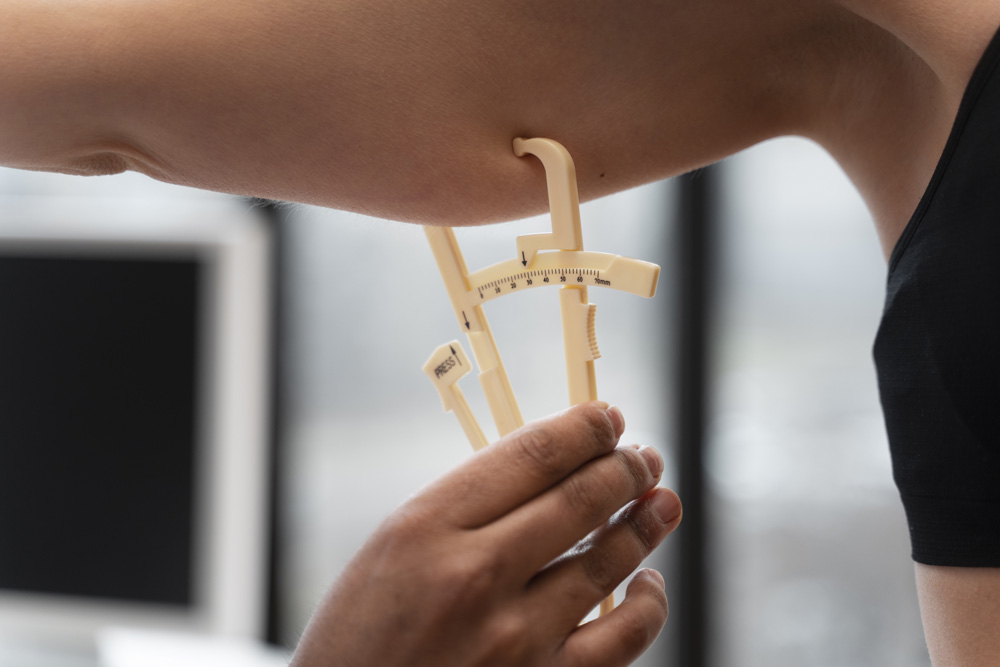
Why Perizia Aesthetics Focuses on Physics, Not Just Tools
Devices matter, but technique governs outcomes. The same laser can create a refined contour or a rough surface depending on how energy is laid down and how fat is evacuated. Our Jupiter clinic treats the laser as one component of a larger system: correct anesthetic plane, careful dosimetry, steady fiber motion, and gentle extraction with micro-instruments. This system reduces tissue trauma, which helps you bruise less, swell less, and recover faster—without compromising definition.
You’ll see those choices reflected in your plan. Superficial lanes get conservative energy to protect skin. Deeper pockets get a measured dose for debulking. Borders are feathered so light reflects naturally after healing. None of that is guesswork. It’s a mapped, repeatable sequence designed to produce an even finish.
Smart Liposuction succeeds when physics, anatomy, and technique move in sync. At Perizia Aesthetics, we treat the laser as a precision brush—useful only when paired with the right anesthetic plane, the right instrument size, and disciplined movement through specific tissue layers. This section explains how the hardware and the biology work together to produce smooth, natural-looking contours.
Micro-Cannulas: Small Tools, Big Control
A cannula is the slim tube that removes fat. We use micro-cannulas—roughly 1.5 to 3.0 millimeters in diameter—because smaller instruments impose less shear on blood vessels and lymphatics. Less shear yields less bruising and swelling, and the healing surface feels more uniform to the touch. Micro-cannulas also create finer tunnels, which matters later when the skin redrapes; many tiny tunnels settle more evenly than a few large ones.
Port design—the openings near the tip—also influences finish quality. Multi-side ports distribute suction more evenly, so fat removal resembles sanding rather than chiseling. This reduces the chance of “step-offs,” those abrupt transitions that catch the eye under angled light. Perizia Aesthetics favors cross-tunneling—approaching the same zone from different angles—to blend planes and feather borders. Imagine raking a zen garden from several directions; lines fade into a smooth field instead of ridged tracks.
Working in Layers: Where the Laser Goes and Why
Beneath the skin lie two main fat layers: a superficial layer tethered by a web of fibrous septa, and a deeper layer that is looser and more forgiving. Smart Liposuction treats them differently. The laser fiber often conditions the superficial layer to stimulate the dermis (the skin’s collagen-rich layer) while the bulk of fat reduction happens in the deeper layer to preserve surface support.
Think of it as scaffolding logic. If you remove too much fat directly under the skin, you weaken support and risk rippling. If you debulk deeper first and reserve superficial work for gentle tuning and tightening, the skin keeps its support while gaining a better fit over the new contour. This is why we talk about depth discipline—a deliberate choice to assign each pass to a layer with a specific purpose.
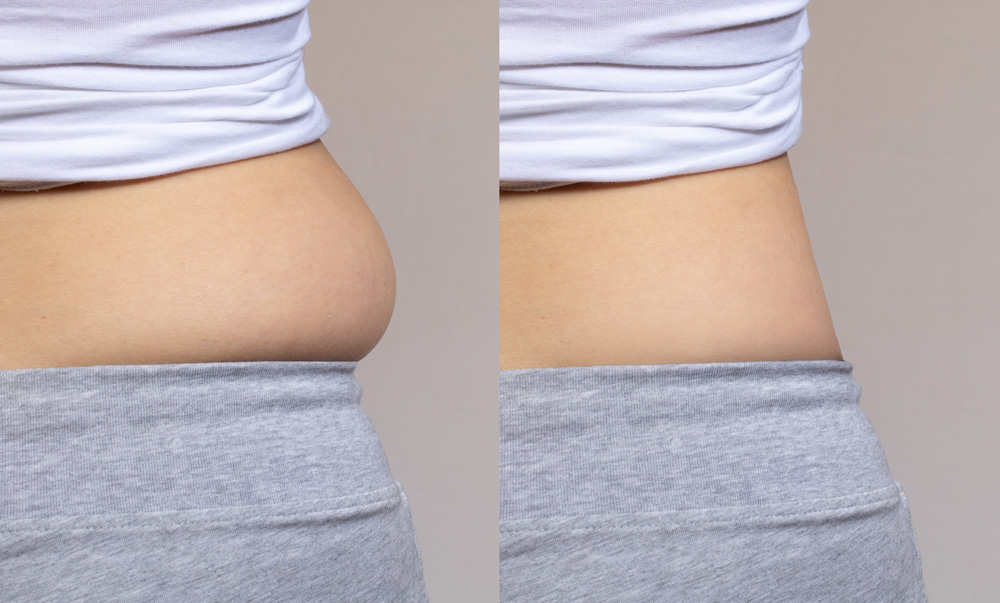
Collagen Remodeling: Why Tightening Improves for Months
The “tightening” you see with Smart Liposuction is not a single moment; it’s a cascade. Heat from the laser causes immediate collagen contraction—the triple-helix structure in collagen partially unwinds and shortens, creating an instant, modest firming. Your body then enters a longer remodeling phase. Specialized cells called fibroblasts migrate into the warmed area and lay down fresh collagen (initially Type III, softer and more flexible). Over weeks to months, that collagen matures into Type I—thicker, stronger fibers that increase dermal stiffness. The practical outcome is progressive smoothing and improved skin “snap-back” between six and twenty-four weeks.
Two sensations often accompany this biology: transient firmness and swelling cycles. Firmness reflects temporary cross-linking in the healing collagen network; it softens as fibers reorganize. Swelling rises and falls with activity and salt intake while the lymphatic system recalibrates. Compression garments help guide tissues into their new shape during this window, encouraging even adherence between skin and the sculpted fat plane beneath.
The Laser’s Role Beyond Fat: Hemostasis and Comfort
Laser energy does more than loosen fat cells. It also coagulates micro-vessels, a process called coagulative hemostasis. Sealing tiny bleeders in real time keeps the field cleaner and often reduces bruising. Patients feel this in indirect ways: less discoloration in the days after treatment and less “heaviness” from pooled fluid.
Because we operate under tumescent anesthesia, you remain comfortably awake. The numbed, fluid-separated plane not only improves comfort but also enhances laser predictability: the saline disperses heat, and the increased working space allows the fiber to glide in consistent, sweeping motions. Consistency is your friend in thermal procedures. Even motion equals even heat equals even healing.
Safety Engineering: How Perizia Aesthetics Manages Heat and Mechanics
Safety is engineered, not assumed. We control three domains—energy, motion, and suction—and we log them as we go.
On the energy side, we cap power based on depth and proximity to the dermis, use pulse characteristics suitable for the tissue we’re treating, and limit dwell time (how long energy remains in any one spot). For motion, the rule is simple: keep the fiber moving. Stutter-steps and pauses concentrate heat, so we train for confident, linear strokes and smooth arcs. Regarding suction, we tune vacuum strength and favor layered passes over aggressive single sweeps. Layering evacuates fat incrementally and preserves micro-support, which is crucial for a uniform surface.
We also maintain plume (smoke) evacuation to clear the field, sterile technique to reduce infection risk, and fluid management to ensure you leave feeling stable and clear-headed. All of this is monitored continuously—vital signs, tumescent volume, and the running log of passes—because documentation supports consistency, and consistency supports results.
Preventing Surface Artifacts: The Art of Feathering
High-quality contours look good in motion, not just in still photos. The eye is sensitive to boundary changes where one anatomic zone meets another—the waist into the flank, the lower abdomen into the pubic region, the axilla into the upper arm. To keep these boundaries natural, we feather—reducing energy and suction gradually as we approach a border—so there is no perceptible “edge.” Cross-tunneling reinforces this blend by intersecting tunnels at shallow angles, smoothing any residual bands in the fibrous network.
Another key is respecting natural highlights and shadows. Everyone has built-in lines—the semilunar line beside the abs, the oblique trough near the waist, the triceps outline on the posterior arm. We aim to clarify these lines, not carve them harshly. That means removing enough fat to reveal a natural contour while preserving the micro-architecture that lets light roll across the surface. When light behaves, results look athletic rather than operated.
Why Smaller Trauma Equals Better Recovery
Patients often ask why laser-assisted micro-cannula work seems to recover faster. The answer is cumulative: fewer vessel injuries, less lymphatic disruption, and cleaner planes translate into less bruising and lower inflammatory load. Lower inflammation means less pain and a quicker return to movement—and movement is medicine after liposuction. Gentle walking enhances lymphatic flow, reduces stiffness, and helps shape settle. Perizia Aesthetics designs aftercare around this principle: compress, hydrate, nourish, and move.
If you’d like these principles mapped to your anatomy, our team can explain how depth, energy, and instrument size would change area by area. Call +1 561-318-7895, explore our Smart Lipo service, or send a note via our contact page.
Smart Liposuction delivers its best work when planning, dosing, and execution align. At Perizia Aesthetics, we treat every case as a physics-and-anatomy problem: where does energy go, how much, how fast, and at what depth? This final section walks you through the practical side of that science, explains when the technology shines, and shows how we audit quality so results look smooth in motion and in photos.
Pre-Operative Mapping: Drawing Vectors, Not Guesses
Before a fiber ever touches tissue, we map vectors—preferred directions for cannula travel and energy lanes that respect your anatomy. Curves and shadow lines guide those vectors. We mark feather zones at boundaries (e.g., abdomen to flanks) to ensure transitions receive lighter dosing and gentler suction. We assign depth targets: superficial passes exist to signal skin tightening, deeper passes exist to debulk. The map keeps these tasks separate, which preserves support while improving shape.
We also document guard landmarks—no-go lines near bony edges, ligamentous tethers, and zones where superficial fat is thin. This reduces the chance of over-resection in delicate areas and maintains the skin’s natural highlight structure.
Dosimetry in Action: How Dose Becomes Contour
Dosimetry means dose management. In Smart Lipo, dose is the sum of power (W) × time ÷ movement across a given area. Change any variable and outcomes shift.
- Power & pulse: We cap power by layer. Superficial lanes get conservative settings to protect the dermis; deeper lanes tolerate slightly higher energy to condition fat before aspiration.
- Dwell control: The fiber keeps moving. Even a one-second pause can stack heat and overshoot the safe window.
- Pass counts: We log passes per zone. More passes at lower energy often beat fewer passes at higher energy. It’s controlled accumulation, not a single blast.
- Feathering: Near borders, we lower suction and energy to blend planes. The aim is a soft gradient, not a cliff.
- Suction tuning: We modulate vacuum strength to match tissue behavior. Fibrous zones need patience, not brute force.
Think of it like airbrushing a gradient. Multiple light coats create an even tone; one heavy spray leaves blotches. Dosimetry turns that art into a replicable method.
Case Examples
Abdomen + flanks (“Lipo 360”): Deeper debulking addresses the central abdomen and posterior flanks first. Superficial, low-energy lanes then cue tightening along the semilunar line and waist trough. Borders at the iliac crest receive feathering to avoid “shelf” effects over the hip bones. Result: narrower waist with natural light roll across obliques.
Arms: Posterior and medial fat are the priority. We spare supportive superficial fat over the triceps to keep the athletic line. Laser contributes tightening near the posterior axillary fold. Gentle suction near the deltoid border prevents a visible step at the shoulder.
Chin/neck: Shallow working depth demands conservative energy and meticulous motion. We debulk submental fat centrally, feather laterally toward the mandibular border, and preserve a cushion along the jaw to avoid harsh edges. Laser heat supports cervicomental angle definition while protecting the dermis.
These patterns show one principle: depth discipline first, border blending always.
Science-Driven Indications and Limits
Smart Lipo excels with localized adiposity and mild skin laxity. The laser enables easier extraction and stimulates collagen so skin can conform to the new contour. It underperforms when the problem is mechanical, not metabolic:
- Excess skin redundancy (e.g., after major weight loss): collagen heat cannot remove excess skin; excisional surgery works better.
- Rectus diastasis (abdominal muscle separation): liposuction cannot repair fascia; plication is surgical.
- Very high-volume debulking in one sitting: staging may be safer to protect hemodynamics and surface support.
Setting proper indications protects both safety and aesthetics.
Managing Firmness and “Swelling Cycles”
Thermal procedures create transient stiffness as collagen cross-links and edema as fluids shift. These normalize with time, movement, hydration, and compression. Expect firmness to soften over weeks as remodeling progresses from early type III collagen to mature type I. Short walks, adequate protein intake, and smart sodium control help the tissue settle evenly over the sculpted planes.
Artifact Prevention: How We Keep Surfaces Even
Surface artifacts—ripples, step-offs, depressions—stem from uneven extraction or unblended borders. Perizia Aesthetics counters them with four habits:
- Cross-tunneling: intersecting paths break fibrous bands and distribute removal.
- Layering: several shallow passes outperform a deep sweep.
- Feathering at borders: lighter touch as regions meet.
- Superficial restraint: preserve supportive septa just under the skin.
When light glides smoothly across the surface, the human eye reads the result as natural and fit.
Quality Assurance: Measuring What Matters
We quantify technique to keep outcomes consistent:
- Pass logs per zone document dose, not just time.
- Edge gradients on standardized photos confirm smooth transitions under matched lighting and angles.
- Circumference deltas provide volumetric proxies (waist, arm, thigh).
- Event tracking (seroma, burn, irregularity) feeds back into settings and methods.
- Garment protocols are documented to link adherence with early shape stability.
Auditing is not busywork; it’s how we ensure tomorrow’s case improves on today’s.
Evidence Snapshot
Peer-reported comparisons of laser-assisted lipolysis versus suction-only techniques frequently show:
- Lower bruising and less intra-operative bleeding thanks to micro-vessel coagulation.
- Measurable increases in dermal thickness on ultrasound or histology after energy-assisted cases, consistent with neocollagenesis.
- High patient satisfaction when energy dosing, motion discipline, and compression protocols are standardized.
These findings align with the protocolized approach used at Perizia Aesthetics and support the rationale for laser assistance when skin quality matters.
Bringing the Science to Your Plan
The headline is simple: dose and depth decide finish quality. Smart Liposuction works when energy warms the right layer, for the right duration, with the right motion—and when extraction respects the skin’s natural support. That’s how you get smooth transitions, natural highlights, and contours that hold up over time.
If you want these principles mapped to your anatomy, we’ll walk you through vectors, depth targets, and energy settings in plain language. Call +1 561-318-7895, explore the details on our Smart Lipo service page, or request a consultation via our contact page.

